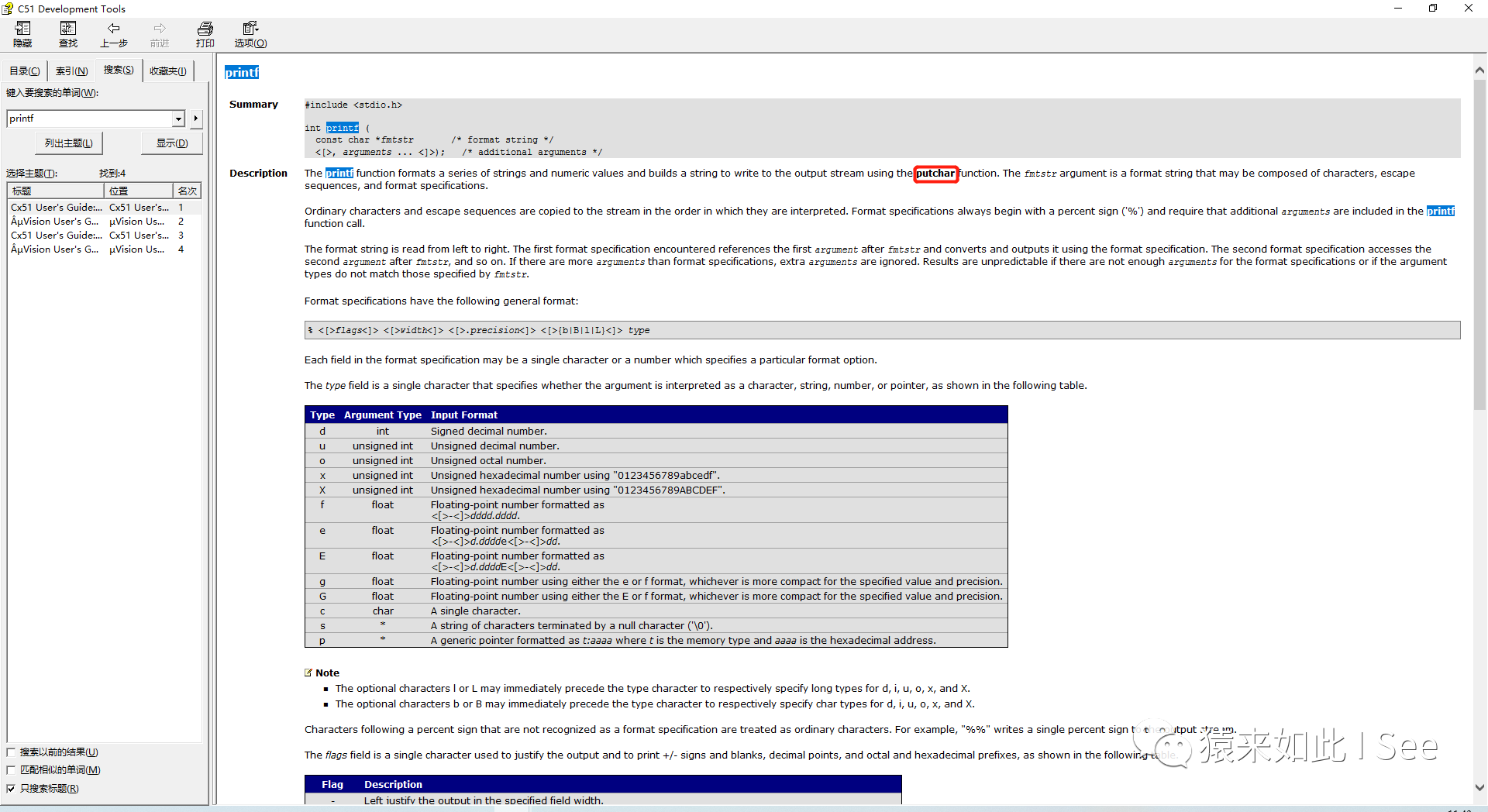一. 背景
在Python中,文件對象sys.stdin、sys.stdout和sys.stderr分別對應解釋器的標準輸入、標準輸出和標準出錯流。在程序啟動時,這些對象的初值由sys.__stdin__、sys.__stdout__和sys.__stderr__保存,以便用于收尾(finalization)時恢復標準流對象。
Windows系統中IDLE(Python GUI)由pythonw.exe,該GUI沒有控制臺。因此,IDLE將標準輸出句柄替換為特殊的PseudoOutputFile對象,以便腳本輸出重定向到IDLE終端窗口(Shell)。這可能導致一些奇怪的問題,例如:
Python 2.7.11 (v2.7.11:6d1b6a68f775, Dec 5 2015, 20:32:19) [MSC v.1500 32 bit (Intel)] on win32
Type "copyright", "credits" or "license()" for more information.
>>> import sys
>>> for fd in (sys.stdin, sys.stdout, sys.stderr): print fd
>>> for fd in (sys.__stdin__, sys.__stdout__, sys.__stderr__): print fd
', mode 'r' at 0x00FED020>
', mode 'w' at 0x00FED078>
', mode 'w' at 0x00FED0D0>
>>>
可以發現,sys.__stdout__與sys.stdout取值并不相同。而在普通的Python解釋器下(如通過Windows控制臺)運行上述代碼時,兩者取值相同。
print語句(statement)不以逗號結尾時,會在輸出字符串尾部自動附加一個換行符(linefeed);否則將一個空格代替附加的換行符。print語句默認寫入標準輸出流,也可重定向至文件或其他可寫對象(所有提供write方法的對象)。這樣,就可以使用簡潔的print語句代替笨拙的object.write('hello'+'\n')寫法。
由上可知,在Python中調用print obj打印對象時,缺省情況下等效于調用sys.stdout.write(obj+'\n')
示例如下:
>>> import sys
>>> print 'Hello World'
Hello World
>>> sys.stdout.write('Hello World')
Hello World
二. 重定向方式
本節介紹常用的Python標準輸出重定向方式。這些方法各有優劣之處,適用于不同的場景。
2.1 控制臺重定向
最簡單常用的輸出重定向方式是利用控制臺命令。這種重定向由控制臺完成,而與Python本身無關。
Windows命令提示符(cmd.exe)和Linux Shell(bash等)均通過">"或">>"將輸出重定向。其中,">"表示覆蓋內容,">>"表示追加內容。類似地,"2>"可重定向標準錯誤。重定向到"nul"(Windows)或"/dev/null"(Linux)會抑制輸出,既不屏顯也不存盤。
以Windows命令提示符為例,將Python腳本輸出重定向到文件(為縮短篇幅已刪除命令間空行):
E:\>echo print 'hello' > test.py
E:\>test.py > out.txt
E:\>type out.txt
hello
E:\>test.py >> out.txt
E:\>type out.txt
hello
hello
E:\>test.py > nul
注意,在Windows命令提示符中執行Python腳本時,命令行無需以"python"開頭,系統會根據腳本后綴自動調用Python解釋器。此外,type命令可直接顯示文本文件的內容,類似Linux系統的cat命令。
Linux Shell中執行Python腳本時,命令行應以"python"開頭。除">"或">>"重定向外,還可使用tee命令。該命令可將內容同時輸出到終端屏幕和(多個)文件中,"-a"選項表示追加寫入,否則覆蓋寫入。示例如下(echo $SHELL或echo $0顯示當前所使用的Shell):
[wangxiaoyuan_@localhost ~]$ echo $SHELL
/bin/bash
[wangxiaoyuan_@localhost ~]$ python -c "print 'hello'"
hello
[wangxiaoyuan_@localhost ~]$ python -c "print 'hello'" > out.txt
[wangxiaoyuan_@localhost ~]$ cat out.txt
hello
[wangxiaoyuan_@localhost ~]$ python -c "print 'world'" >> out.txt
[wangxiaoyuan_@localhost ~]$ cat out.txt
hello
world
[wangxiaoyuan_@localhost ~]$ python -c "print 'I am'" | tee out.txt
I am
[wangxiaoyuan_@localhost ~]$ python -c "print 'xywang'" | tee -a out.txt
xywang
[wangxiaoyuan_@localhost ~]$ cat out.txt
I am
xywang
[wangxiaoyuan_@localhost ~]$ python -c "print 'hello'" > /dev/null
[wangxiaoyuan_@localhost ~]$
若僅僅想要將腳本輸出保存到文件中,也可直接借助會話窗口的日志抓取功能。
注意,控制臺重定向的影響是全局性的,僅適用于比較簡單的輸出任務。
2.2 print >>重定向
這種方式基于print語句的擴展形式,即"print obj >> expr"。其中,obj為一個file-like(尤其是提供write方法的)對象,為None時對應標準輸出(sys.stdout)。expr將被輸出到該文件對象中。
示例如下:
memo = cStringIO.StringIO(); serr = sys.stderr; file = open('out.txt', 'w+')
print >>memo, 'StringIO'; print >>serr, 'stderr'; print >>file, 'file'
print >>None, memo.getvalue()
上述代碼執行后,屏顯為"serr"和"StringIO"(兩行,注意順序),out.txt文件內寫入"file"。
可見,這種方式非常靈活和方便。缺點是不適用于輸出語句較多的場景。
2.3 sys.stdout重定向
將一個可寫對象(如file-like對象)賦給sys.stdout,可使隨后的print語句輸出至該對象。重定向結束后,應將sys.stdout恢復最初的缺省值,即標準輸出。
簡單示例如下:
import sys
savedStdout = sys.stdout #保存標準輸出流
with open('out.txt', 'w+') as file:
sys.stdout = file #標準輸出重定向至文件
print 'This message is for file!'
sys.stdout = savedStdout #恢復標準輸出流
print 'This message is for screen!'
注意,IDLE中sys.stdout初值為PseudoOutputFile對象,與sys.__stdout__并不相同。為求通用,本例另行定義變量(savedStdout)保存sys.stdout,下文也將作此處理。此外,本例不適用于經由from sys import stdout導入的stdout對象。
以下將自定義多種具有write()方法的file-like對象,以滿足不同需求:
class RedirectStdout: #import os, sys, cStringIO
def __init__(self):
self.content = ''
self.savedStdout = sys.stdout
self.memObj, self.fileObj, self.nulObj = None, None, None
#外部的print語句將執行本write()方法,并由當前sys.stdout輸出
def write(self, outStr):
#self.content.append(outStr)
self.content += outStr
def toCons(self): #標準輸出重定向至控制臺
sys.stdout = self.savedStdout #sys.__stdout__
def toMemo(self): #標準輸出重定向至內存
self.memObj = cStringIO.StringIO()
sys.stdout = self.memObj
def toFile(self, file='out.txt'): #標準輸出重定向至文件
self.fileObj = open(file, 'a+', 1) #改為行緩沖
sys.stdout = self.fileObj
def toMute(self): #抑制輸出
self.nulObj = open(os.devnull, 'w')
sys.stdout = self.nulObj
def restore(self):
self.content = ''
if self.memObj.closed != True:
self.memObj.close()
if self.fileObj.closed != True:
self.fileObj.close()
if self.nulObj.closed != True:
self.nulObj.close()
sys.stdout = self.savedStdout #sys.__stdout__
注意,toFile()方法中,open(name[, mode[, buffering]])調用選擇行緩沖(無緩沖會影響性能)。這是為了觀察中間寫入過程,否則只有調用close()或flush()后輸出才會寫入文件。內部調用open()方法的缺點是不便于用戶定制寫文件規則,如模式(覆蓋或追加)和緩沖(行或全緩沖)。
重定向效果如下:
redirObj = RedirectStdout()
sys.stdout = redirObj #本句會抑制"Let's begin!"輸出
print "Let's begin!"
#屏顯'Hello World!'和'I am xywang.'(兩行)
redirObj.toCons(); print 'Hello World!'; print 'I am xywang.'
#寫入'How are you?'和"Can't complain."(兩行)
redirObj.toFile(); print 'How are you?'; print "Can't complain."
redirObj.toCons(); print "What'up?" #屏顯
redirObj.toMute(); print '' #無屏顯或寫入
os.system('echo Never redirect me!') #控制臺屏顯'Never redirect me!'
redirObj.toMemo(); print 'What a pity!' #無屏顯或寫入
redirObj.toCons(); print 'Hello?' #屏顯
redirObj.toFile(); print "Oh, xywang can't hear me" #該串寫入文件
redirObj.restore()
print 'Pop up' #屏顯
可見,執行toXXXX()語句后,標準輸出流將被重定向到XXXX。此外,toMute()和toMemo()的效果類似,均可抑制輸出。
使用某對象替換sys.stdout時,盡量確保該對象接近文件對象,尤其是涉及第三方庫時(該庫可能使用sys.stdout的其他方法)。此外,本節替換sys.stdout的代碼實現并不影響由os.popen()、os.system()或os.exec*()系列方法所創建進程的標準I/O流。
2.4 上下文管理器(Context Manager)
本節嚴格意義上并非新的重定向方式,而是利用Pyhton上下文管理器優化上節的代碼實現。借助于上下文管理器語法,可不必向重定向使用者暴露sys.stdout。
首先考慮輸出抑制,基于上下文管理器語法實現如下:
import sys, cStringIO, contextlib
class DummyFile:
def write(self, outStr): pass
@contextlib.contextmanager
def MuteStdout():
savedStdout = sys.stdout
sys.stdout = cStringIO.StringIO() #DummyFile()
try:
yield
except Exception: #捕獲到錯誤時,屏顯被抑制的輸出(該處理并非必需)
content, sys.stdout = sys.stdout, savedStdout
print content.getvalue()#; raise
#finally:
sys.stdout = savedStdout
使用示例如下:
with MuteStdout():
print "I'll show up when is executed!" #不屏顯不寫入
raise #屏顯上句
print "I'm hiding myself somewhere:)" #不屏顯
再考慮更通用的輸出重定向:
import os, sys
from contextlib import contextmanager
@contextmanager
def RedirectStdout(newStdout):
savedStdout, sys.stdout = sys.stdout, newStdout
try:
yield
finally:
sys.stdout = savedStdout
使用示例如下:
def Greeting(): print 'Hello, boss!'
with open('out.txt', "w+") as file:
print "I'm writing to you..." #屏顯
with RedirectStdout(file):
print 'I hope this letter finds you well!' #寫入文件
print 'Check your mailbox.' #屏顯
with open(os.devnull, "w+") as file, RedirectStdout(file):
Greeting() #不屏顯不寫入
print 'I deserve a pay raise:)' #不屏顯不寫入
print 'Did you hear what I said?' #屏顯
可見,with內嵌塊里的函數和print語句輸出均被重定向。注意,上述示例不是線程安全的,主要適用于單線程。
當函數被頻繁調用時,建議使用裝飾器包裝該函數。這樣,僅需修改該函數定義,而無需在每次調用該函數時使用with語句包裹。示例如下:
import sys, cStringIO, functools
def MuteStdout(retCache=False):
def decorator(func):
@functools.wraps(func)
def wrapper(*args, **kwargs):
savedStdout = sys.stdout
sys.stdout = cStringIO.StringIO()
try:
ret = func(*args, **kwargs)
if retCache == True:
ret = sys.stdout.getvalue().strip()
finally:
sys.stdout = savedStdout
return ret
return wrapper
return decorator
若裝飾器MuteStdout的參數retCache為真,外部調用func()函數時將返回該函數內部print輸出的內容(可供屏顯);若retCache為假,外部調用func()函數時將返回該函數的返回值(抑制輸出)。
MuteStdout裝飾器使用示例如下:
@MuteStdout(True)
def Exclaim(): print 'I am proud of myself!'
@MuteStdout()
def Mumble(): print 'I lack confidence...'; return 'sad'
print Exclaim(), Exclaim.__name__ #屏顯'I am proud of myself! Exclaim'
print Mumble(), Mumble.__name__ #屏顯'sad Mumble'
在所有線程中,被裝飾函數執行期間,sys.stdout都會被MuteStdout裝飾器劫持。而且,函數一經裝飾便無法移除裝飾。因此,使用該裝飾器時應慎重考慮場景。
接著,考慮創建RedirectStdout裝飾器:
def RedirectStdout(newStdout=sys.stdout):
def decorator(func):
def wrapper(*args,**kwargs):
savedStdout, sys.stdout = sys.stdout, newStdout
try:
return func(*args, **kwargs)
finally:
sys.stdout = savedStdout
return wrapper
return decorator
使用示例如下:
file = open('out.txt', "w+")
@RedirectStdout(file)
def FunNoArg(): print 'No argument.'
@RedirectStdout(file)
def FunOneArg(a): print 'One argument:', a
def FunTwoArg(a, b): print 'Two arguments: %s, %s' %(a,b)
FunNoArg() #寫文件'No argument.'
FunOneArg(1984) #寫文件'One argument: 1984'
RedirectStdout()(FunTwoArg)(10,29) #屏顯'Two arguments: 10, 29'
print FunNoArg.__name__ #屏顯'wrapper'(應顯示'FunNoArg')
file.close()
注意FunTwoArg()函數的定義和調用與其他函數的不同,這是兩種等效的語法。此外,RedirectStdout裝飾器的最內層函數wrapper()未使用"functools.wraps(func)"修飾,會丟失被裝飾函數原有的特殊屬性(如函數名、文檔字符串等)。
2.5 logging模塊重定向
對于代碼量較大的工程,建議使用logging模塊進行輸出。該模塊是線程安全的,可將日志信息輸出到控制臺、寫入文件、使用TCP/UDP協議發送到網絡等等。
默認情況下logging模塊將日志輸出到控制臺(標準出錯),且只顯示大于或等于設置的日志級別的日志。日志級別由高到低為CRITICAL > ERROR > WARNING > INFO > DEBUG > NOTSET,默認級別為WARNING。
以下示例將日志信息分別輸出到控制臺和寫入文件:
import logging
logging.basicConfig(level = logging.DEBUG,
format = '%(asctime)s [%(levelname)s] at %(filename)s,%(lineno)d: %(message)s',
datefmt = '%Y-%m-%d(%a)%H:%M:%S',
filename = 'out.txt',
filemode = 'w')
#將大于或等于INFO級別的日志信息輸出到StreamHandler(默認為標準錯誤)
console = logging.StreamHandler()
console.setLevel(logging.INFO)
formatter = logging.Formatter('[%(levelname)-8s] %(message)s') #屏顯實時查看,無需時間
console.setFormatter(formatter)
logging.getLogger().addHandler(console)
logging.debug('gubed'); logging.info('ofni'); logging.critical('lacitirc')
通過對多個handler設置不同的level參數,可將不同的日志內容輸入到不同的地方。本例使用在logging模塊內置的StreamHandler(和FileHandler),運行后屏幕上顯示:
[INFO ] ofni
[CRITICAL] lacitirc
out.txt文件內容則為:
2016-05-13(Fri)17:10:53 [DEBUG] at test.py,25: gubed
2016-05-13(Fri)17:10:53 [INFO] at test.py,25: ofni
2016-05-13(Fri)17:10:53 [CRITICAL] at test.py,25: lacitirc
除直接在程序中設置Logger、Handler、Formatter等外,還可將這些信息寫入配置文件。示例如下:
#logger.conf
###############Logger###############
[loggers]
keys=root,Logger2F,Logger2CF
[logger_root]
level=DEBUG
handlers=hWholeConsole
[logger_Logger2F]
handlers=hWholeFile
qualname=Logger2F
propagate=0
[logger_Logger2CF]
handlers=hPartialConsole,hPartialFile
qualname=Logger2CF
propagate=0
###############Handler###############
[handlers]
keys=hWholeConsole,hPartialConsole,hWholeFile,hPartialFile
[handler_hWholeConsole]
class=StreamHandler
level=DEBUG
formatter=simpFormatter
args=(sys.stdout,)
[handler_hPartialConsole]
class=StreamHandler
level=INFO
formatter=simpFormatter
args=(sys.stderr,)
[handler_hWholeFile]
class=FileHandler
level=DEBUG
formatter=timeFormatter
args=('out.txt', 'a')
[handler_hPartialFile]
class=FileHandler
level=WARNING
formatter=timeFormatter
args=('out.txt', 'w')
###############Formatter###############
[formatters]
keys=simpFormatter,timeFormatter
[formatter_simpFormatter]
format=[%(levelname)s] at %(filename)s,%(lineno)d: %(message)s
[formatter_timeFormatter]
format=%(asctime)s [%(levelname)s] at %(filename)s,%(lineno)d: %(message)s
datefmt=%Y-%m-%d(%a)%H:%M:%S
此處共創建三個Logger:root,將所有日志輸出至控制臺;Logger2F,將所有日志寫入文件;Logger2CF,將級別大于或等于INFO的日志輸出至控制臺,將級別大于或等于WARNING的日志寫入文件。
程序以如下方式解析配置文件和重定向輸出:
import logging, logging.config
logging.config.fileConfig("logger.conf")
logger = logging.getLogger("Logger2CF")
logger.debug('gubed'); logger.info('ofni'); logger.warn('nraw')
logger.error('rorre'); logger.critical('lacitirc')
logger1 = logging.getLogger("Logger2F")
logger1.debug('GUBED'); logger1.critical('LACITIRC')
logger2 = logging.getLogger()
logger2.debug('gUbEd'); logger2.critical('lAcItIrC')
運行后屏幕上顯示:
[INFO] at test.py,7: ofni
[WARNING] at test.py,7: nraw
[ERROR] at test.py,8: rorre
[CRITICAL] at test.py,8: lacitirc
[DEBUG] at test.py,14: gUbEd
[CRITICAL] at test.py,14: lAcItIrC
out.txt文件內容則為:
2016-05-13(Fri)20:31:21 [WARNING] at test.py,7: nraw
2016-05-13(Fri)20:31:21 [ERROR] at test.py,8: rorre
2016-05-13(Fri)20:31:21 [CRITICAL] at test.py,8: lacitirc
2016-05-13(Fri)20:31:21 [DEBUG] at test.py,11: GUBED
2016-05-13(Fri)20:31:21 [CRITICAL] at test.py,11: LACITIRC
三. 總結
以上就是關于Python標準輸出的重定向方式的全部內容,希望對學習python的朋友們能有所幫助,如果有疑問歡迎大家留言討論。
 電子發燒友App
電子發燒友App


























評論